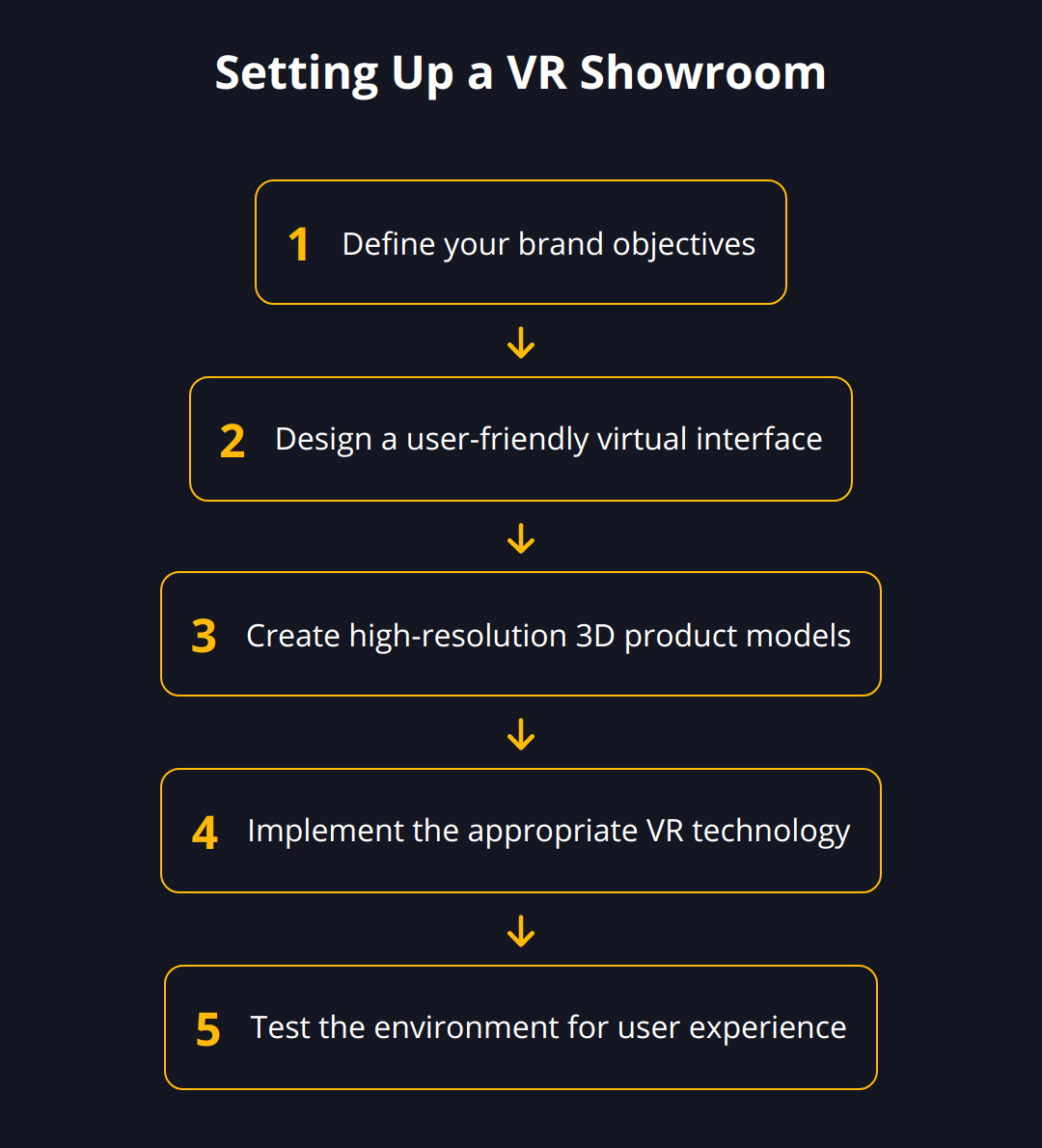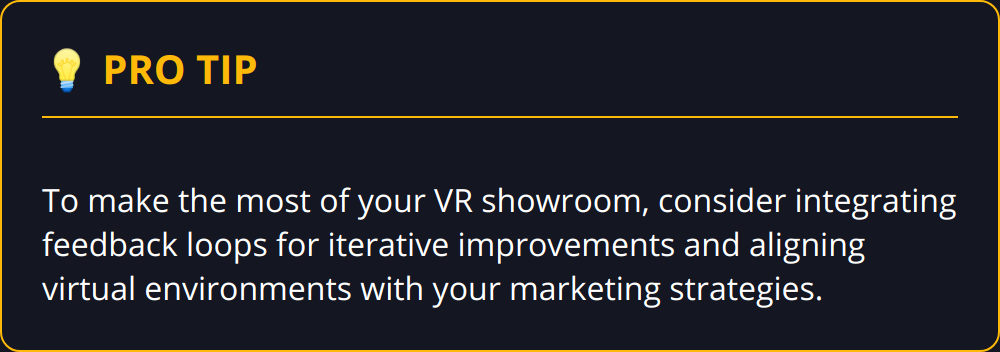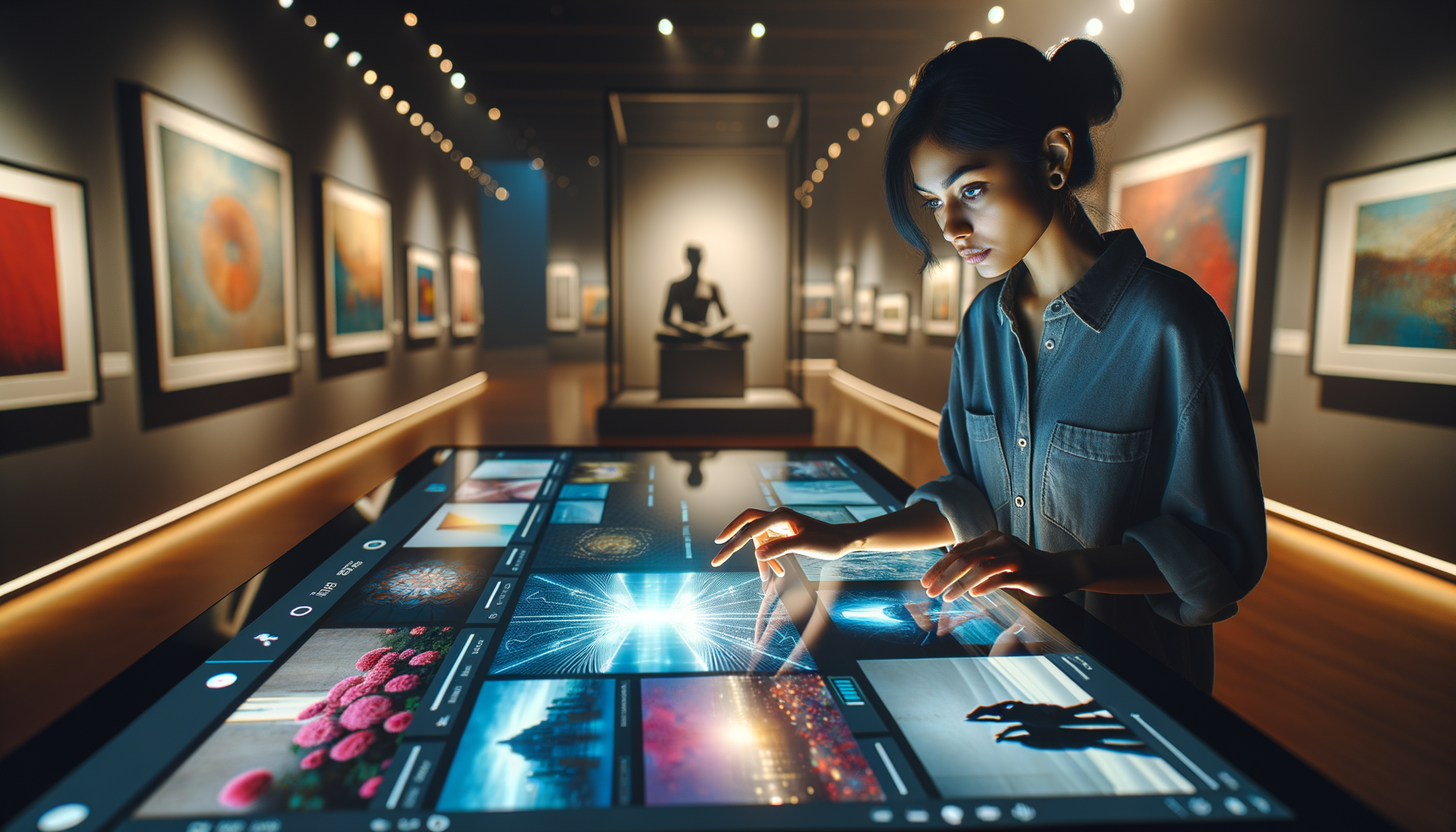Welcome to the cutting edge of retail innovation. We at Newroom Connect are excited to explore the dynamic realm of Virtual Reality (VR) showrooms, a concept that is transforming the way businesses connect with consumers.
VR showrooms are not just a futuristic idea but a practical solution that offers tangible benefits for businesses looking to enhance customer engagement and operational efficiency. Let’s delve into the mechanics, advantages, and implementation strategies of this immersive technology, providing you with a comprehensive guide to establishing your own VR showroom.
What Is a VR Showroom?
Exploring the exciting world of virtual reality, a VR showroom is much like its physical counterpart but within a digital landscape. It combines the interactivity of physical spaces with the endless possibilities of virtual environments, allowing users to navigate and interact with products in a completely immersive format. This space is built using a combination of 3D modeling, virtual reality technology, and often game development engines like Unreal Engine or Unity.
When you step into a VR showroom, you’re embarking on a user journey that closely mimics visiting a traditional store, but with enhanced capabilities. Consumers can virtually “walk” through the space, inspect products from all angles, customize items to their preference, and get detailed product information—all through a VR headset.
Now, let’s give you an insight into setting up your own VR showroom. The process includes a mixture of creative design and technical knowledge. You’ll want to start by:
-
Defining your objectives
-
Designing a user-friendly interface
-
Creating high-resolution 3D models of your products
-
Setting up the right VR technology and software
-
Testing the environment for user experience
But what really goes on behind the scenes? The setup requires a meticulous approach:
- Designing the virtual space to reflect your brand’s physical environment and ethos
- Integrating e-commerce capabilities, enabling customers to make purchases directly within the VR showroom
- Gathering data analytics to understand customer behavior and preferences
- Regular content updates to keep the space fresh and engaging

Building a VR showroom isn’t a mere adoption of new tech; it’s a strategic move to position a brand at technology’s forefront and offer unparalleled customer experiences. If you want a deeper look at the intricacies of setting up such a space, why virtual showroom technology is changing the retail landscape provides insightful details.
Keep in mind:
-
VR showrooms can significantly reduce the need for physical inventory
-
They offer a sustainable alternative that can reduce carbon footprints
-
Analytics from VR showrooms provide invaluable data on customer engagement

In an increasingly digital world, VR showrooms are no longer an optional luxury; they’re becoming an essential component in the retail mix. With their ability to create memorable experiences and facilitate informed purchasing decisions, they’re an investment that promises substantial returns.
How Do VR Showrooms Benefit Your Business?
When it comes to VR showrooms, the advantages are substantial for both businesses and consumers. This interactive platform doesn’t just captivate customers; it also streamlines operations and unlocks new potential in personalization.
Engaging Customers Like Never Before
Interactive experience is not just a buzzword in the context of VR showrooms; it’s the core principle. Consumers are not only spectators but active participants in a digitally crafted world that encourages exploration and interaction. To illustrate, apparel retailers find that offering virtual try-ons leads to greater customer satisfaction and a measurable uptick in sales. When customers can view themselves wearing different outfits without the hassle of changing rooms, the convenience factor alone boosts the likelihood of a purchase.

Cost Efficiency and Space Innovation
The traditional need for expansive floor space wanes with the advent of its virtual counterpart. VR showrooms allow for showcasing an entire catalogue of products without the associated costs of a physical storefront, inventory management, or the logistics of sample products. It’s not uncommon to see retailers report a significant drop in overhead costs while simultaneously experiencing growth in customer reach.
Data-Driven Customization and Improvement
Each interaction within a VR showroom is a source of real-time data, offering insights into consumer behavior, preferences, and trends. Not only does this enable retailers to compile extensive customer profiles for highly targeted marketing, but it also informs product development. Furniture sellers, for instance, might note which features draw more attention in a virtual setup, guiding them to refine product designs accordingly.
By implementing a VR showroom, you’re not just adopting new technology; you’re revamping your business model for increased agility in the market. A practical first step is to partner with software platforms that align with your brand’s vision, like those that specialize in 3D product visualization. This partnership paves the way for a seamless transition into the digital realm, with supporting analytics to ensure your VR showroom evolves with your business.
Remember, a VR showroom is more than a shining example of modern technology; it’s a strategic asset that can reshape your brand’s future. Keep an eye out for continued evolutions in this field, as they become not just advantageous but necessary for staying competitive in a digital-first market.

Following are a few strategic pointers for businesses considering a VR showroom:
-
Integrate feedback loops to continuously improve user experience
-
Utilize heatmaps to see where customers spend the most time
-
Align VR environments with ongoing marketing campaigns for synergy
The conclusion is clear: VR showrooms are propelling businesses and consumer interaction forward, offering an unmatched blend of immersion, innovation, and intelligence. Looking ahead, they represent a fundamental shift in retail—one that could redefine success in the industry.
How to Set Up a VR Showroom
Embarking on the journey of creating a VR showroom entails precise planning and execution to ensure that your virtual space captivates and retains customer interest. Here’s a roadmap to navigate the technical side of constructing an immersive VR showroom that stands out in the digital marketplace.
Selecting the Right VR Technology
Your choice of VR technology lays the foundation for the entire showroom experience. Opt for a platform that provides high-quality rendering capabilities and is scalable to your business needs. The tech should also be compatible with widely-used VR headsets to maximize accessibility. It’s vital to prioritize user convenience; the less friction or additional equipment needed, the better.
In concrete terms, look for a VR solution that offers:
-
High-quality visuals and motion tracking
-
Easy integration with existing systems
-
Robust support and continuous updates
Designing an Immersive Experience
The design stage is where your VR showroom comes to life. It’s no secret that users seek experiences that are as realistic as they are engaging. Aim for hyper-realistic 3D models that are meticulously detailed. Remember, the more lifelike your products appear in the VR showroom, the greater the trust and confidence customers will have in them.
To create this level of immersion, consider the following:
-
Realistic Lighting: Proper lighting can make or break the virtual environment. It should mirror how products look in real life to enhance credibility.
-
Texture Details: Applying high-resolution textures adds depth and realism to your models, improving the overall sensory experience.
-
User Navigation: Intuitive user movement within the VR space is critical for maintaining engagement. Ensure the navigation is smooth and effortless.
The essence of engagement in a VR showroom is allowing customers to interact with products. Provide options for customization and personalization—allowing users to modify colors, features, and sizes of the products. These interactions not only deepen engagement but also provide valuable data on consumer preferences.
Marketing and Customer Engagement
Once your VR showroom is operational, the focus shifts to attracting and engaging customers. Marketing your VR space effectively is essential to ensure traffic and usage. Consider aligning your VR showroom launch with a significant marketing campaign, possibly one utilizing virtual trade fair strategies.
Engagement does not end when the customer puts on the headset. Use real-time data analytics to refine and optimize the user’s journey within the virtual space. This could involve:
-
Personalized Greetings: Offer a customized welcome message for repeat visitors.
-
Product Highlights: Use analytics to showcase products that are trending or in high demand.
-
Special Promotions: Integrate time-sensitive deals or exclusives within the VR experience.

Remember, the goal is not just to impress your customers but to provide a platform that becomes an integral part of their shopping routine. In a digital age where experiences are increasingly valued over products, your VR showroom should not just facilitate transactions but also foster community and brand loyalty.
Takeaways for VR Showroom Success
-
Opt for scalable VR technology that accommodates business growth.
-
Prioritize hyper-realism in your 3D designs to build trust and ensure product integrity.
-
Simplify user navigation to make the VR experience seamless for all customers.
-
Implement data-driven customization to enhance user engagement repeatedly.
-
Align VR marketing with broader marketing campaigns for maximum impact.
Integrating these elements into your VR showroom will put you on the right path to creating a digital destination that customers are eager to return to. With each detail crafted to perfection, you’ll be providing an immersive experience that not only captivates customers but also drives business results.
Remember, the world of VR retail is dynamic, and continuous innovation is key to staying relevant. Quality content, responsive design, and strategic marketing are not mere options but necessities for success in fostering a vigorous VR showroom. Looking forward, it’s the businesses that master this blend of technology and customer experience who will lead the pack.
Final Thoughts
VR showrooms represent a transformative leap in the retail landscape, eclipsing traditional boundaries and offering unprecedented experiences to customers. They mark a significant turning point in how brands and businesses interact with audiences, combine immersive technologies with customer insights, and present products in innovative, engaging ways.
![Key Takeaways - VR Showroom Experiences [Guide]](https://newroom-connect.com/wp-content/uploads/2023/12/VR-Showroom-Experiences-Guide-6-2023-12-24-070934.5875160000.png)
We at Newroom Connect, stand at the forefront of this digital revolution. Our platform enables companies to create immersive virtual trade fairs, showrooms, and e-learning platforms. These tools are not just novel experiences for your customers – they are gateways to unlocking deeper brand engagement, broadening market reach, and collecting invaluable consumer data.
Embracing VR Showrooms
Businesses stand to gain immensely by adopting VR showroom technology:
-
Elevate customer shopping experiences beyond physical limitations
-
Capitalize on reduced operational and inventory costs
-
Harness data to personalize marketing and product offerings
In taking this innovative step, you are setting your business apart, signaling that you are a forward-thinking player ready to meet future retail challenges head-on.
The Future Landscape of VR Technology
As we look to the future, VR showroom technology promises even more groundbreaking advancements. This journey has only just begun, and we anticipate a steady stream of innovations that will further refine and personalize user experiences. We see a horizon where VR technology is not just for the select few but an integral part of the mainstream retail ecosystem.
Advancements we are eager to witness include:
-
More intuitive user interfaces
-
Even more realistic 3D renderings
-
Integration with emerging technologies like AI and IoT
Join the VR Showroom Movement
Stepping into VR is a bold move, but it is one that rewards businesses with greater customer loyalty and a stronger brand presence. The time to integrate virtual reality into your business strategy is now, with consumers increasingly valuing digital convenience and unique experiences.
We encourage businesses of all sizes to explore the potential that VR showrooms have to offer. Partner with us at Newroom Connect and let us guide you through this exciting new chapter in digital retail. Join the innovators who are shaping the future of shopping and usher in a new epoch of customer interaction and satisfaction.
The significance of VR in modern retail cannot be overstated, and at Newroom Connect, we are dedicated to ensuring that your business remains at the cutting edge. Take the step towards an innovative future – the benefits are clear and just within reach.


